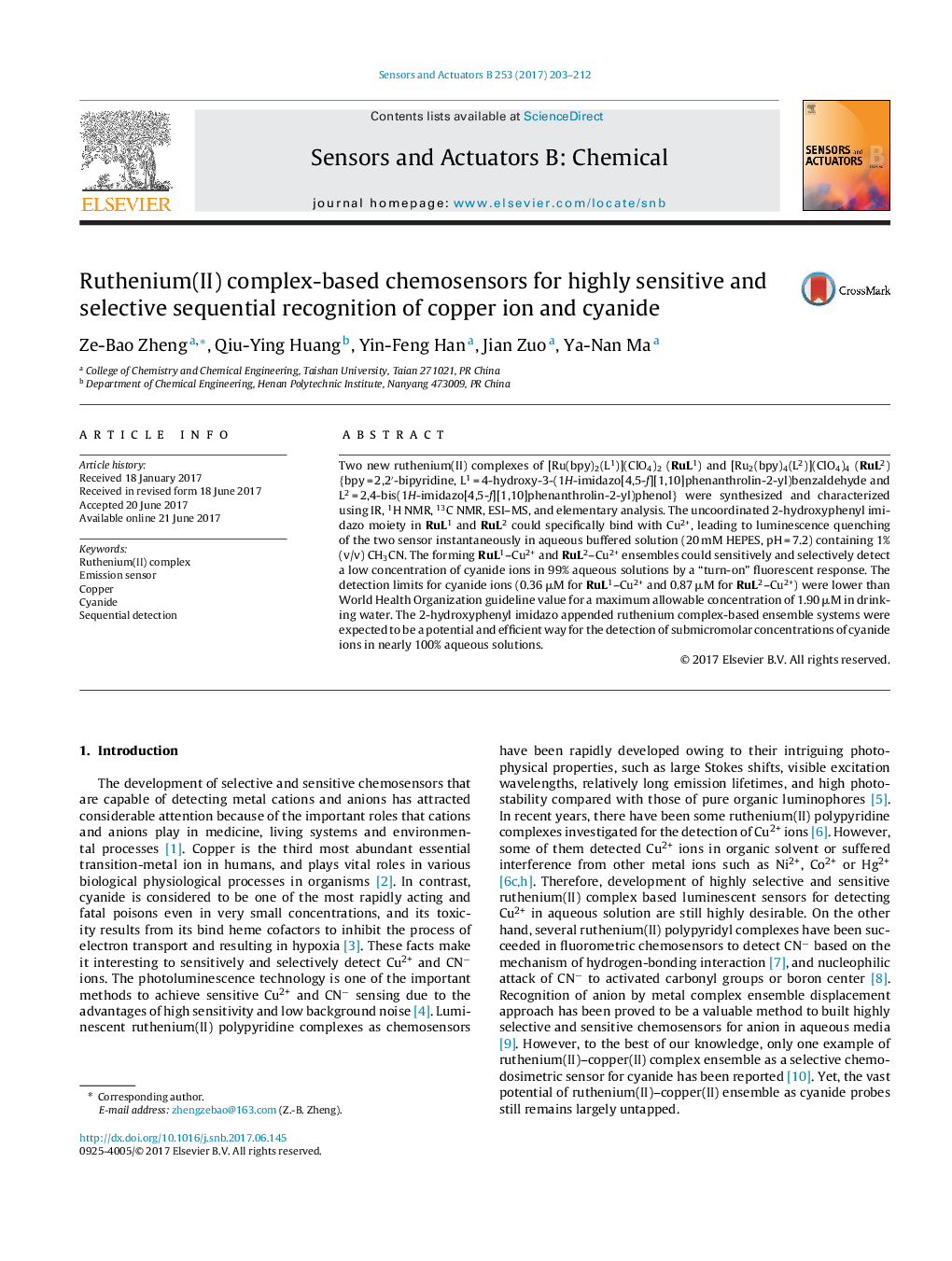| Article ID | Journal | Published Year | Pages | File Type |
|---|---|---|---|---|
| 5008964 | Sensors and Actuators B: Chemical | 2017 | 10 Pages |
Abstract
Two new ruthenium(II) complexes of [Ru(bpy)2(L1)](ClO4)2 (RuL1) and [Ru2(bpy)4(L2)](ClO4)4 (RuL2) {bpy = 2,2â²-bipyridine, L1 = 4-hydroxy-3-(1H-imidazo[4,5-f][1,10]phenanthrolin-2-yl)benzaldehyde and L2 = 2,4-bis(1H-imidazo[4,5-f][1,10]phenanthrolin-2-yl)phenol} were synthesized and characterized using IR, 1H NMR, 13C NMR, ESI-MS, and elementary analysis. The uncoordinated 2-hydroxyphenyl imidazo moiety in RuL1 and RuL2 could specifically bind with Cu2+, leading to luminescence quenching of the two sensor instantaneously in aqueous buffered solution (20 mM HEPES, pH = 7.2) containing 1% (v/v) CH3CN. The forming RuL1-Cu2+ and RuL2-Cu2+ ensembles could sensitively and selectively detect a low concentration of cyanide ions in 99% aqueous solutions by a “turn-on” fluorescent response. The detection limits for cyanide ions (0.36 μM for RuL1-Cu2+ and 0.87 μM for RuL2-Cu2+) were lower than World Health Organization guideline value for a maximum allowable concentration of 1.90 μM in drinking water. The 2-hydroxyphenyl imidazo appended ruthenium complex-based ensemble systems were expected to be a potential and efficient way for the detection of submicromolar concentrations of cyanide ions in nearly 100% aqueous solutions.
Related Topics
Physical Sciences and Engineering
Chemistry
Analytical Chemistry
Authors
Ze-Bao Zheng, Qiu-Ying Huang, Yin-Feng Han, Jian Zuo, Ya-Nan Ma,
